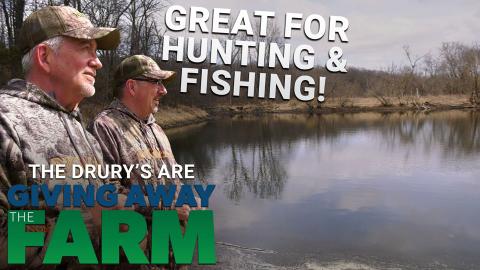Richard Hines | Originally published in GameKeepers: Farming for Wildlife Magazine. To subscribe, click here.
It was mid-October and my hunting partner Joe McDonald and I were hunting ruffed grouse with Mike Dziki, north of Clear Lake, Wisconsin. It seemed like only a few minutes into the hunt when Mike’s German Shorthair went on point, but getting to his dog was going to be another story. The small stems of aspen, alder, and spruce mixed with greenbriers was making traveling tough, but that’s typical of ruffed grouse habitat.
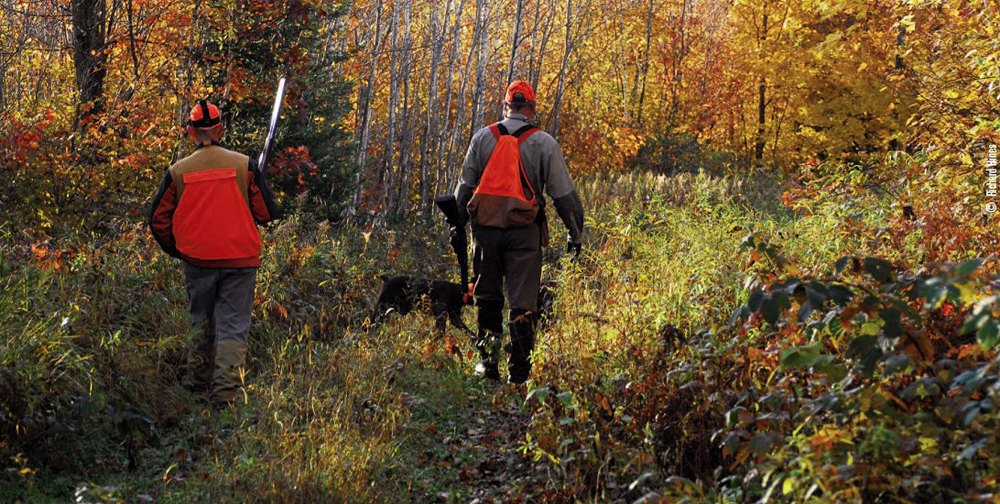
If you are hunting ruffed grouse, it’s all about “young forests with high stem density” and it matters little if you are in Kentucky, Wisconsin or Maine, this premier game bird requires young forested habitat. Ironically, grouse habitat is also temporary because as stands of young trees increase in age and size, habitat quality declines.
Ruffed grouse are the most widely distributed game bird in North America ranging from a small section of western South Carolina north to Newfoundland and across Canada and the upper tier of US states to the Pacific. Even over such a large part of the continent the components of grouse habitat remain similar. The most productive region for “ruffs” is around the Great Lakes and the one tree that makes or breaks the habitat for ruffed grouse is the aspen tree.
Dan Dessecker, Director of Conservation Policy for the Ruffed Grouse Society said, “Through northern regions, the most important management is maintaining the aspen resource and this does not mean protection, but cutting and harvesting trees wisely. If your aspen stand matures, ground cover becomes sparse. This lowers grouse numbers, and at this point, you need to harvest trees primarily with clearcutting small patches, which is the preeminent method for improving grouse habitat. These cuts allow the sun loving aspen to sprout numerous root suckers.”
Dessecker said, “If landowners in this region want to increase grouse, you can generally impact birds with 20-40 acre cuts and even if you are only doing a handful of patch cuts these can be effective for ruffed grouse.” Many landowners may not like clearcuts and many fear they have lost all their trees, but in reality, the trees are still there, just younger. For the most part, Dessecker says, the solution to having more grouse is pretty “clear-cut” because grouse must have high stem density throughout their range and cutting is the only way to maintain this stage of forest growth.
Another improvement technique includes seeding logging trails and log decks. Dessecker told me, grouse prefer clover in trail plantings and it’s a great food source BUT, not managed correctly it can be an ecological trap. That’s because you are drawing the birds into a cultivated opening which makes them susceptible to avian predators. If you going to make trails and plots don’t use one straight line. Construct bends and curves so a roosting predator will only see 30-40 yards as opposed to one long straight trail hundreds of yards long. Adding curves in trails also increases the amount of edge, which grouse and other wildlife use heavily.
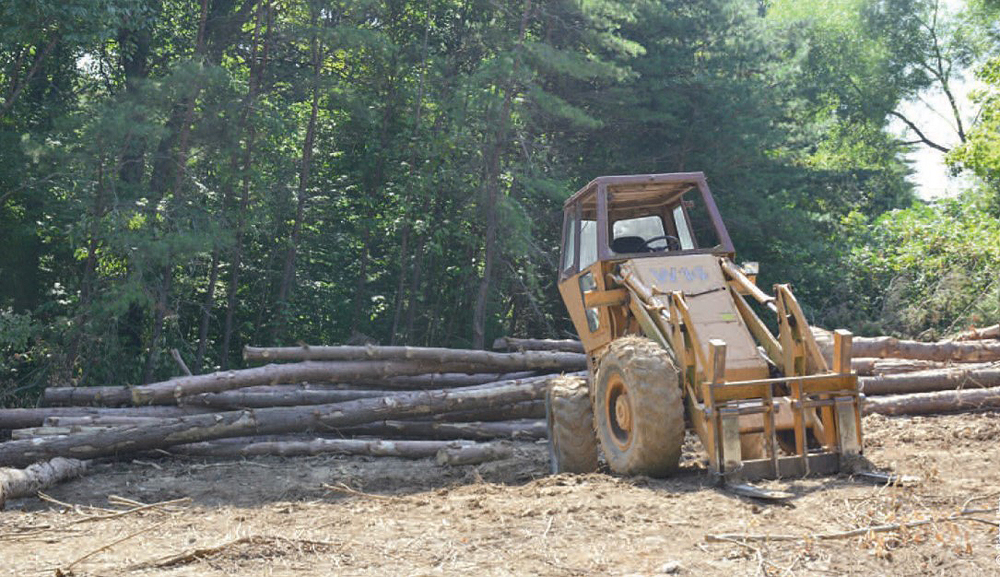
The best friend a ruffed grouse has is a chainsaw and log skidder, because the most important habitat component; high stem density only occurs after logging. After a site is logged, seed that has been dormant for years including suckers (sprouts) from harvested trees will respond rapidly to the sunlight by shooting up thousands of stems. Generally, sprouting peaks in four or five years when the site may contain upwards to 10,000 stems per acre. With each passing year thousands of tree sprouts drop out or die and over time dominate trees begin capturing the site. As the high stem density declines, it becomes less desirable for grouse.
If you are not in aspen range, habitat management is still a possibility according to RGS Regional Biologist, Linda Ordiway, who works strictly with oak and northern hardwood habitat. “Grouse densities will not be as high as in the aspen regions because the response in hardwoods is much slower than with aspens.” In the Appalachians, responses of cutting woodland can vary on the same tract of land according to slope aspect (north side verses the south side) or low moist sites verses dry sites.
Linda continued, “Management is similar for other regions in that you are implementing a series of harvest cuts from five to 40 acres.” This is really the most beneficial technique you could use. If you have cuts larger than 40 acres, birds will only generally use the edges.
When managing forests for grouse, RGS likes to see cuts scattered across the landscape. For instance; “if you are harvesting 60 acres of timber, it’s best to break it up into four or five cuts because birds are continually moving from one area to another throughout their home range.”
If you own a large acreage, say several hundred acres, it’s possible to scatter small cuts, but if you only have 15 or 20 acres, Ordiway suggested you look around your property and see which habitat component you can provide for the ruffed grouses’ annual cycle. If you are surrounded by extensive clear cuts and you have larger timber with more open understories you may be able to provide critical nesting habitat. While this varies site to site it is sometimes the easiest approach to providing habitat.
Planting is really not an issue with ruffed grouse. In a well-managed forest, natural soft mast including grapes, serviceberry, and gray dogwood are consumed readily. Ordiway added, “They like their salad too and they will eat ferns and other greenery throughout the year.”
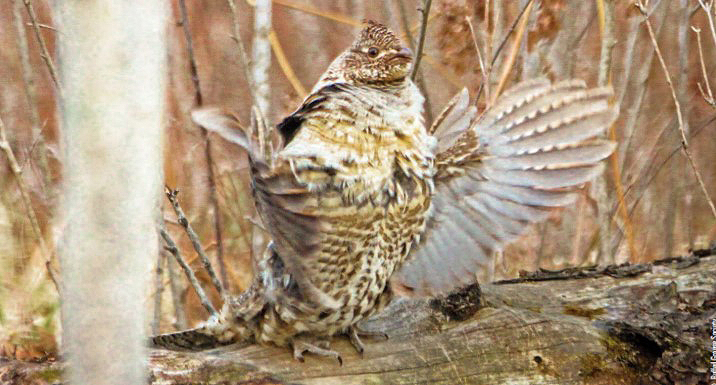
In the spring grouse will feed on flowing catkins of many trees including beech or birch trees which may grow around edges of deer plots. A plot improvement might include feathering back forest edges. Ordiway says “Avoid the wall of tall.” Abrupt edges are not as beneficial to grouse as are brushy edges and this “interface” between larger trees and openings will promote soft mast species. These interfaces or ecotones are also good brooding areas for young turkeys as well.
Grouse hunters and managers have long recognized the importance of early successional forests, but many species require this habitat. Jason Lupardus; Conservation Field Supervisor with the National Wild Turkey Federation told me that NWTF is now focusing much of their efforts on early successional forests. “It’s good to manage a wide range of habitat types in one forest and early successional forest is the stage that a wide range of species including turkeys use. Lupardus said, “Planting log decks and trails benefit turkey, deer and grouse. With fall disking you are also setting the stage for a growth of native legumes and heavy seeded plants like panicums the following summer”.
Matt Ross, a Wildlife Biologist with the Quality Deer Management Association, agrees and says, “There is a lot of overlap between the use of forested habitat for deer and ruffed grouse. When converting a mature forest with a closed canopy to a younger forest through timber harvesting, anyone managing grouse can also expect to get a flush of good plants for deer lasting five to eight years.”
As sunlight reaches the ground the new herbaceous growth provides ample forage for deer and soft mast species for grouse. Since there is a timeline of about 7 years, Ross suggested landowners with small tracts work cooperatively with other landowners so there is a rotation of young forest being constantly provided somewhere within the home range for grouse and deer.
If you are wondering how important aspen are to grouse, consider this fact provided by West Virginia Wildlife Biologist Keith Krantz. “Grouse go about their day foraging for various food items in the fall and recent radio telemetry research found that grouse in the oak-hickory region and Appalachian Mountains require around 5 ½ hours to obtain their daily nutrition while grouse in the aspen regions require only 45 minutes.” Less time feeding is less time exposed to predators.
Generally, grouse numbers will continue to stay low in much of the oak-hickory regions because of the lack of cutting forests. One bird generally uses about 20 acres in its home range and if you do have birds in your area say within four miles or so you may get a response. Any further and the odds are lower.
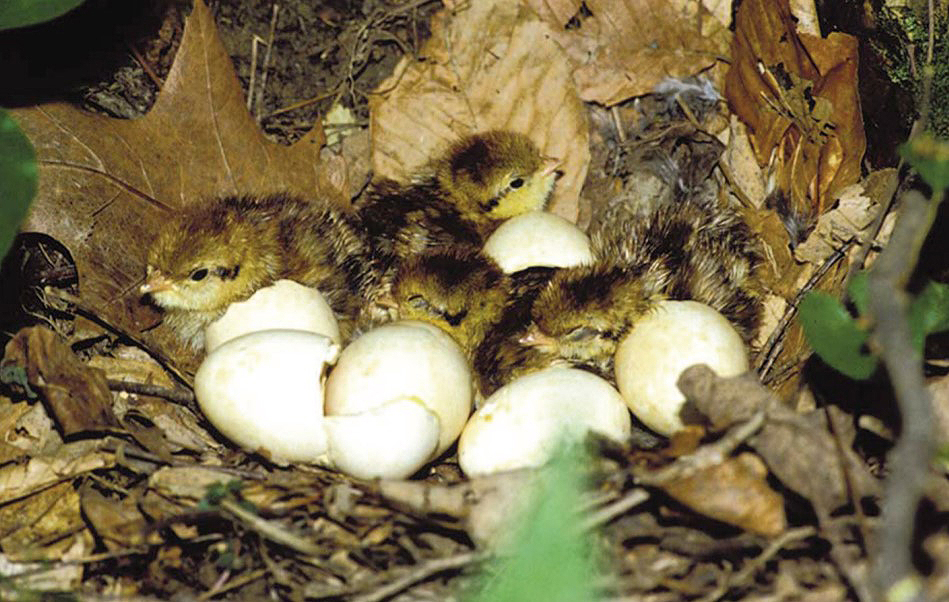
The Infamous 10-Year Cycle
Another phenomenon that grouse hunters are aware of is the “10-year cycle.” It’s so well known that many hunters outside of ruffed grouse range plan hunts to coincide with peak years. Dessecker told me if you look at the Great Lakes States and central provinces in Canada a ten-year cycle is unquestionable. However, as you go south of the Great Lakes states; Ohio, Pennsylvania, or West Virginia the cycle is not evident. There are population fluctuations in the hardwood regions, but Ordiway and Krantz feel it is linked to timber harvest rates. As timber prices go up you will see a subsequent increase in cutting. The result is an increase in grouse five or six years down the road as the birds respond to the forest reaching optimal habitat stages after cutting.
However, where this 10-year cycle does occur there is still no silver bullet answer. Dessecker has narrowed it down to two items. “One is the eruption in raptor populations primarily goshawks erupting in Canada every so many years and there seems to be some correlation.” He further stated the second and most logical answer, “Aspen itself may be part of the cycle because this tree is such an important winter or early spring food source.” Grouse feed heavily on the catkins and flower buds, but as grouse populations increase foraging, it appears aspen, like numerous other plants, produce a chemical defense mechanism to thwart grazing.
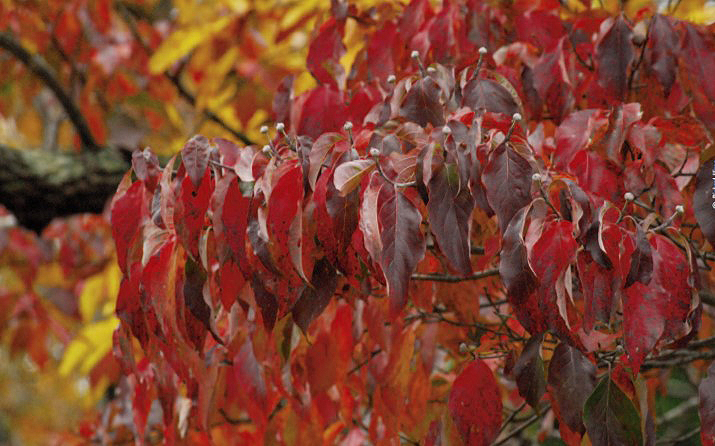
One group of researchers found that trees which grouse did not feed on tended to have a chemical called “Coniferyl benzoate” at higher levels. It is through this and other chemicals produced by the aspen buds that make them less digestible, which in the end knocks the population back. Researchers working on ruffed grouse will continue looking into this but there may be little wildlife managers can do to change this natural process. This theory seems to make sense since grouse are not cyclical outside of the primary range of aspen.
So what do grouse need? Overall, planting trails with clover will benefit the birds as well as your deer, turkey and other small game, but most of all ruffed grouse need chainsaws, log skidders and an active forest management program. Regardless if you are on the southern end of the Appalachian Mountain Range in the Carolinas or in aspen thickets of northern North Dakota, small well-placed clearcuts have the greatest benefit for grouse, Dessecker told me “baby trees need love too and if you don’t have young forests you won’t have ruffed grouse.” “Early successional forests” are now the buzzwords and organizations such as QDMA, RGS and NWTF now recognize the importance of this habitat type to so many species.
Throughout the year grouse require basically four types of habitat during their annual life cycle including breeding and nesting cover, brood rearing, plus fall and winter cover. In some form or fashion all are equally important.
Breeding Cover, which is generally 10-year-old clearcuts. These are where you find a key component in breeding; “drumming logs.” Males chose these sites that will have around 60 feet of visibility and a sufficient canopy to protect them from avian predators. Drumming sites are further into big cuts so leaving at least one log per acre toward the center of cuts is important.
Nesting cover and annual reproduction is an important part of the annual life cycle. This is one time of the year grouse move out of high stem sites preferring to build nests outside of the clear cuts instead choosing to nest at the base of large trees.
Chicks move into brood rearing cover immediately after hatching. These areas are adjacent to openings along trails, food plots or wide log decks. They likely have bare dirt for dusting plus succulent vegetation such as clover and they will feed on both the clover and insects. Insects are almost pure protein and important to chicks which feed heavily on them when they are one to five weeks old. Just how many insects will a chick eat per day? Roughly 1.2 ounces, which is around 900 per day!
If you are in the range of ruffed grouse, why not consider including them into your management plan. You will also be improving habitat for deer, turkey and a list of other species too long to mention. Above all before getting started get detailed advice about your specific site from a Certified Wildlife Biologist and Professional Forester.















